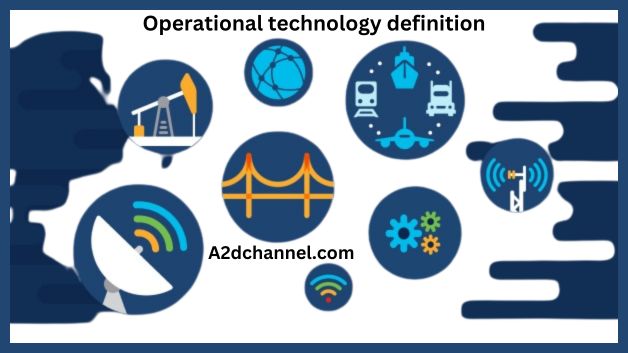Operational Technology Definition
Operational technology (OT) is playing an increasingly vital role in industries such as manufacturing, energy, and transportation. However, many people are still unsure of what exactly operational technology entails. This article provides an in-depth look at the definition of operational technology, its key components, applications, challenges, and future trends.
Table of Contents
 |
| Operational technology definition |
Understanding Operational Technology
- Systems for industrial control
- SCADA (Supervisory Control and Data Acquisition)
- Distributed
control systems (DCS) - Programmable Logic Controllers (PLCs)
Information technology (IT) is centered around the management and processing of data and information, whereas operational technology (OT) is concerned with the direct interaction with devices, sensors, and networks that monitor and manage physical operations. OT offers insights and allows for the management of industrial activities via data gathering and automation processes.
Evolution of Operational Technology
The progression of operational technology from its initial stages has been remarkable, transitioning through several key industrial revolutions:
- - During Industry 1.0, the advent of mechanization and the utilization of steam power marked the era.
- - Industry 2.0 was characterized by the introduction of mass production techniques and the implementation of assembly lines, powered by electrical energy.
- - The emergence of Industry 3.0 saw the adoption of programmable logic controllers (PLCs) and the automation of various processes.
- - Currently, Industry 4.0 is transforming automation and connectivity, leveraging technologies such as artificial intelligence (AI), the Internet of Things (IoT), cloud computing, and data analytics.
The continuous advancements in technology are transforming OT infrastructure to be more intelligent, interconnected, and reliant on data.
Components of Operational Technology
Key parts in running tech include:
Systems for Industrial Control - They handle and keep an eye on real tasks like making things, producing energy, and cleaning water.
SCADA Systems - Special software that gathers, keeps, looks at, and shows data from running tech.
Sensors - Tools that pick up things like heat, push, and power levels, then send this info to control units.
Actuators - Powered gadgets that turn control signals into physical moves.
PLCs - Tough computers that deal with running tech data and make machines work on their own.
These parts of running tech work together to watch and control big industrial activities.
Applications of Operational Technology
Operational tech is often used in areas like:
Making things: Control units, screens, and system guides make work lines, machines, and factories work better.
Power: Smart power lines, auto power stations, and system guides for sharing power make sure electricity is made, sent, and used well.
Moving: Signals for trains, lights for roads, and tracking for cargo keep people and things moving.
Water/Clean-up: System guides and sensors for water check and handle water safely from afar.
Oil and Gas: System guides for pipes, checks on drill sites, and remote units help find, pull, and move oil and gas.
Buildings: Systems for managing buildings and air systems watch and fix lights, safety, and how much energy buildings use.
Challenges and Security in Operational Technology
Deploying operational technology faces many challenges, including:
- Legacy systems and proprietary protocols hinder integration.
- Real-time performance limitations.
- Significant physical impact of a cyber incident.
- Lack of transparency regarding assets and vulnerabilities.
Addressing these OT security risks requires strategies such as:
- Network segmentation for IT and OT infrastructure.
- Multi-factor authentication for access control.
- Monitor for unusual network traffic and system behavior.
- Contingency plans for cyber incidents.
Future of Operational Technology
New technologies are shaping the next generation of operational technology.
Analytics and AI drive smarter industrial automation.
IoT platforms enable device connectivity at scale.
AR/VR enables more intuitive human-machine interfaces.
5G and edge computing will support real-time control and decision-making.
These innovations are transforming operational technology, making it more responsive, efficient, and resilient.
Conclusion
In summary, operational technology encompasses the hardware and software infrastructure that allows industries to monitor and control physical processes. As OT continues advancing to meet the demands of Industry 4.0, understanding what operational technology is, its applications, and associated security considerations remains crucial. With innovations in AI, IoT, cloud and other technologies, the future of OT promises to be more connected, intelligent and impactful than ever.
